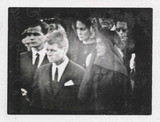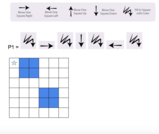
In the first unit for Grade 4, students extend their work with whole numbers and use this generalized understanding of the place value system in the context of comparing numbers, rounding them, and adding and subtracting them.
Students understanding of the base ten system begins as early as Kindergarten, when students learn to decompose teen numbers as ten ones and some ones (K.NBT.1). This understanding continues to develop in Grade 1, when students learn that ten is a unit and therefore decompose teen numbers into one ten (as opposed to ten ones) and some ones and learn that the decade numbers can be referred to as some tens (1.NBT.1). Students also start to compare two-digit numbers (1.NBT.2) and add and subtract within 100 based on place value (1.NBT.3—5). In second grade, students generalize the place value system even further, understanding one hundred as a unit (2.NBT.1) and comparing, adding, and subtracting numbers within 1,000 (2.NBT.2—9). In Grade 3, place value (NBT) standards are additional cluster content, but they still spend time fluently adding and subtracting within 1,000 and rounding three-digit numbers to the nearest 10 and 100 (3.NBT.1—2).
Thus, because students did not focus heavily on place value in Grade 3, Unit 1 begins with where things left off in Grade 2 of understanding numbers within 1,000. Students get a sense of the magnitude of each place value by visually representing the place values they are already familiar with and building from there. Once students have a visual and conceptual sense of the “ten times greater” property, they are able to articulate why a digit in any place represents 10 times as much as it represents in the place to its right (4.NBT.1). Next, students write multi-digit numbers in various forms and compare them (4.NBT.2). Comparison leads directly into rounding, where Grade 4 students learn to round to any place value (4.NBT.3). Next, students use the standard algorithms for addition and subtraction with multi-digit numbers (4.NBT.4) and apply their algorithmic knowledge to solve word problems. The unit culminates with multi-step word problems involving addition and subtraction, using a letter to represent the unknown quantity, then using rounding to assess the reasonableness of their answer (4.OA.3), allowing for students to connect content across different clusters and domains (4.NBT.A, 4.NBT.B, and 4.OA.B).
Throughout the unit, students will repeatedly look for and make use of structure, specifically the structure of the place value system (MP.7). Students develop an understanding that a digit in any place represents 10 times as much as it represents in the place to its right, then apply that understanding of structure to compare, round, and add and subtract multi-digit whole numbers
- Subject:
- Mathematics
- Material Type:
- Assessment
- Homework/Assignment
- Lesson Plan
- Unit of Study
- Provider:
- Match Fishtank
- Date Added:
- 01/01/2017




